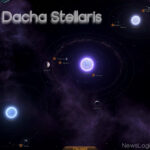Introduction
In ultra-modern digital generation, synthetic intelligence (AI) has revolutionized how innovative tasks are accomplished. Among those improvements, AI-powered photo mills have gained widespread traction.
These tools allow users to create specific, super pictures with minimal effort, making them imperative for designers, entrepreneurs, and developers.
But how are you going to create an AI photo generator tailored for your precise needs? Let’s discover!
What Is an AI Image Generator?
An Create an AI Image Generator for Your Projects is a software utility that makes use of device mastering (ML) models to generate visible content.
These gear can create something from realistic pics to abstract art, frequently with easy textual or visible enter.
Popular equipment like DALL·E, MidJourney, and Stable Diffusion exhibit the electricity of AI in image introduction.
Key Features of AI Image Generators
- Text-to-picture technology.
- Customization of styles and issues.
- Support for high-decision outputs.
- Scalability for personal and business tasks.
Why Build Your Own AI Image Generator?
While many tools are effortlessly available, building your own AI picture generator can offer the following advantages.
- Customization: Tailor the generator to fulfill your task necessities, which include unique styles, resolutions, or outputs.
- Cost Efficiency: Save lengthy-term subscription prices by proudly owning your own tool.
- Data Privacy: Ensure your venture statistics remain steady through maintaining it in-house.
- Scalability: Scale the device as wished without counting on 0.33-party offerings.
Step-through-Step Guide to Creating an AI Image Generator
Define Your Project Goals
Before diving into the technicalities, make clear your targets.
- Purpose: Are you building it for private use, enterprise, or to sell as a product?
- Style and Output: What form of pix do you want the generator to create (sensible, cartoonish, abstract)?
- Integration Needs: Will it integrate with web sites, apps, or standalone software?
Choose the Right AI Framework
AI frameworks provide the muse to your photo generator. Some popular picks encompass.
- TensorFlow: A versatile ML library for constructing AI fashions.
- PyTorch: Known for its flexibility and simplicity of use, specially for studies-primarily based projects.
- OpenAI’s DALL·E API: If you need a less complicated implementation, this prebuilt API can manage the heavy lifting.
Collect and Prepare a Dataset
For schooling your AI model, you’ll need a dataset of images.
Sources for Datasets
Publicly available datasets like ImageNet or COCO.
Custom datasets that align with your undertaking’s dreams.
Data Labeling: Ensure images are classified efficiently to enhance the version’s accuracy.
Data Cleaning: Remove duplicates, low-high-quality photographs, and irrelevant content material to ensure powerful education.
Build the AI Model
To generate photos, you’ll want to construct or first-class-music an existing version. Common fashions encompass.
GANs (Generative Adversarial Networks)
Generate practical photographs via antagonistic education between a generator and a discriminator.
Diffusion Models
- Used by way of equipment like Stable Diffusion, those models create notable, exact snap shots.
- Transformers.
- Ideal for combining textual content-to-image competencies.
Train the Model
Training your model is vital but useful resource-in depth. Steps consist of.
- Hardware Requirements: Use GPUs or TPUs for faster training.
- Parameter Tuning: Adjust learning charges, batch sizes, and model architecture.
- Iterations: Train the version over a couple of epochs to make sure accuracy.
Implement a User Interface
Create a user-pleasant interface wherein users can input activates and view generated photos.
Options for Development
- Web-based UI: Use React, Vue.Js, or Angular for interactive interfaces.
- Desktop Application: Develop standalone apps using frameworks like Electron.
- Mobile Apps: Use tools like Flutter or Swift for mobile compatibility.
Optimize and Deploy
- Performance Optimization: Reduce latency by way of compressing fashions and the use of cloud infrastructure.
- Testing: Test with diverse inputs to identify weaknesses and improve the device.
Deployment Platforms
- Cloud systems like AWS, Google Cloud, or Azure.
- Dedicated servers for better control.
Challenges in Building an AI Image Generator
Creating an AI photograph generator is profitable however comes with challenges.
- Resource Intensity: Training AI models calls for big computational power.
- Data Limitations: Quality and variety of education statistics impact the version’s output.
- Ethical Concerns: Avoid biases in information and make sure responsible use of the generation.
- Integration Complexities: Seamless integration with other tools can be tricky.
Applications of AI Image Generators
- Marketing: Generate attractive visuals for campaigns.
- Gaming: Design characters, environments, and belongings.
- E-commerce: Create product mockups and promotional content material.
- Education: Visualize standards for better expertise.
- Social Media: Produce attention-grabbing snap shots and memes.
Conclusion
Creating an AI photograph generator is an thrilling enterprise that mixes technology and creativity.
By information your project goals, leveraging the proper frameworks, and addressing demanding situations efficiently, you could expand a device that revolutionizes your workflows.
Whether you’re a developer or a commercial enterprise proprietor, this guide presents the roadmap to harnessing the electricity of AI in image technology.
So, why wait? Start constructing your AI photograph generator today and unlock endless creative possibilities.


